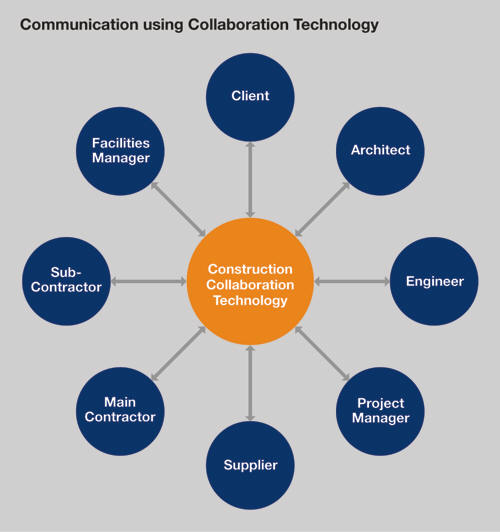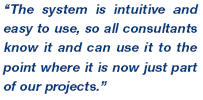December 2007
![]()
AutomatedBuildings.com
[an error occurred while processing this directive]
(Click Message to Learn More)
December 2007 |
[an error occurred while processing this directive] |
|
|
Aconex Aconex is an online document management service providing web collaboration for construction, engineering and facilities management. Case Study |
About The Facility
 Sydney
Opera House is one of the world’s iconic buildings. Instantly recognizable
around the world, it is one of the great architectural achievements of the 20th
Century. Its design and construction involved countless innovative ideas and
techniques, and today that same innovation plays a key role in the ongoing
management of the facility.
Sydney
Opera House is one of the world’s iconic buildings. Instantly recognizable
around the world, it is one of the great architectural achievements of the 20th
Century. Its design and construction involved countless innovative ideas and
techniques, and today that same innovation plays a key role in the ongoing
management of the facility.
The design of the building is well known but the facility itself is extremely complex, containing 800 separate areas. Main sections include: the Concert Hall, the Opera Theatre, the Drama Theatre, the Playhouse and the Studio, each seating between 220 and 2679. There are also five rehearsal studios, 60 dressing rooms, five restaurants, six theatre bars, five foyer and lounge areas, and the Green Room for performers and staff.
|
|
|
|
|
|
|
|
|
|
|
|
|
|
|
|
|
|
|
|
|
[an error occurred while processing this directive] |
Other areas, not open to the public, include offices, kitchens, laundries, wardrobe rooms, electrical facilities, security operations and two vast underground air-conditioning areas. There is also a 1,100-space car park below the complex. The entire building occupies around 1.82 hectares (4.5 acres) of its 2.23 hectare (5.5 acre) site.
Client Requirement: A Single Platform for Design, Construction & FM
In order to maintain its world-class facility, Sydney Opera House (SOH) undertakes a continuous program of improvements and renovations. In the past five years, this has included renovations to the reception hall (Utzon Room), the box office toilets, the forecourt infrastructure, the western foyers and a number of other areas.
To complete these projects, SOH engages a number of parties including architects, builders, engineers, and specialist consultants. Following construction, the asset is handed over to the facilities management (FM) division, which is then responsible for its ongoing maintenance.
This created the need for a single platform for project information storage and control that can link the parties involved with design, construction and FM and ensure that everyone has access to shared, accurate and up-to-date information. With so many external consultants involved, a system that could provide visible accountability was also important.
Solution: Web-Based Collaboration
Sydney Opera House selected Aconex to provide its web-based collaboration solution for its building project work. The system manages information – including drawings, documents and correspondence – online. This enables all authorized parties, internal and external, to view, distribute and track their files electronically through one central system.
The system tracks document revisions to ensure that the latest version of each file is available and tracks the status of correspondence, such as requests for information, advice, approvals and variations, to provide an audit trail of ‘who did what and when’ – highlighting any bottlenecks.
Aconex was implemented due to it providing a structured, formal way of managing all correspondence between the parties delivering the project. The system formalizes this process so that a record is kept of documentation and correspondence that holds people accountable.
Before systems like Aconex, copies of drawings, transcript notes, etc. would need to be distributed in hard copy throughout the project team. When there were disputes or difficulties regarding information, the letter or document would need to be found. But even that is no guarantee over whether the party had actually received it, in that there was no validation that the document had arrived, was opened and read.


A key aspect of Aconex is that when looking for particular drawings the latest version is always available. This means that people are forced to see revisions, are aware of relevant documents and can’t make a mistake or be given the wrong version. This is a compelling way to manage data as no party can claim they didn’t receive documents.
 In addition to
providing accountability, SOH experienced benefits relating to the time and
money spent on administrative tasks. A project manager estimated that before
using a system like Aconex, about 30% of the time the transmittal sheet they
received did not correlate with attached drawings. This would then involve
manually checking each document to see if they matched and following up on any
errors. Because Aconex automates this process, it cuts a significant
administrative task from a project manager’s or consultant’s role, effectively
trimming labor costs – the highest cost on any project.
In addition to
providing accountability, SOH experienced benefits relating to the time and
money spent on administrative tasks. A project manager estimated that before
using a system like Aconex, about 30% of the time the transmittal sheet they
received did not correlate with attached drawings. This would then involve
manually checking each document to see if they matched and following up on any
errors. Because Aconex automates this process, it cuts a significant
administrative task from a project manager’s or consultant’s role, effectively
trimming labor costs – the highest cost on any project.
Being able to disseminate files electronically between their network of consultants has also delivered cost savings and greater efficiency to SOH. Couriers can be expensive, so moving the process to be electronic saves money and is a lot more controllable.
 “If a design
change is made in the afternoon, it can be documented that night, then issued
the next day. Previously this process may have taken a week,“ a project manager
said. “There is always someone on a project saying ‘I need it now’. With Aconex,
files can be accessed or distributed in an instant. If I need a drawing or
sketch I can find or receive it now, print it out and take it to a meeting. The
system is intuitive and easy to use, so all consultants know it and can use it
to the point where it is now just part of our projects.”
“If a design
change is made in the afternoon, it can be documented that night, then issued
the next day. Previously this process may have taken a week,“ a project manager
said. “There is always someone on a project saying ‘I need it now’. With Aconex,
files can be accessed or distributed in an instant. If I need a drawing or
sketch I can find or receive it now, print it out and take it to a meeting. The
system is intuitive and easy to use, so all consultants know it and can use it
to the point where it is now just part of our projects.”
Construction through to Facility Management
To streamline the progression from construction to FM, Sydney Opera House has recently created a system where, during design and construction, relevant documents are labeled for the FM division, and are transferred electronically to a separate section of Aconex. This information is then transferred into Sydney Opera House’s corporate record system as a permanent record of the projects.
The result is that complete documentation of the design and construction data, including as-builts and operations and maintenance manuals, can be continuously handed over in real time to support ongoing facilities management. Using Aconex means that documents can’t be lost through handover, therefore completing the process of the total project.
[an error occurred while processing this directive]
[Click Banner To Learn More]
[Home Page] [The Automator] [About] [Subscribe ] [Contact Us]